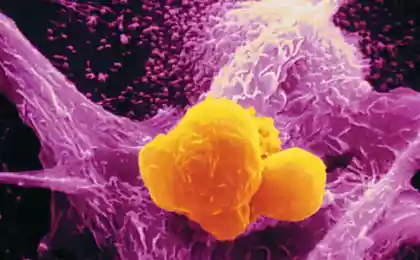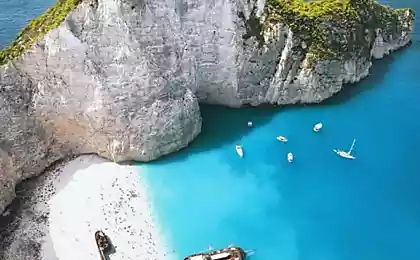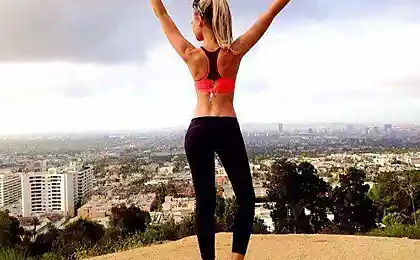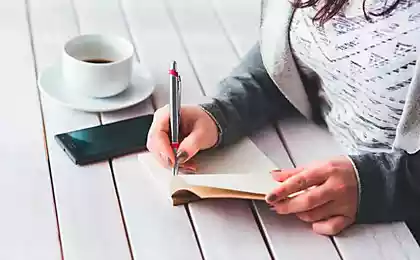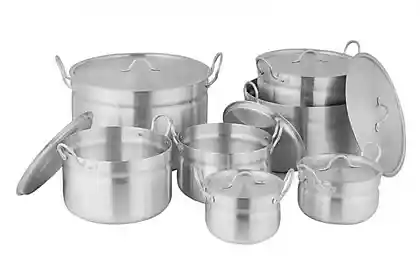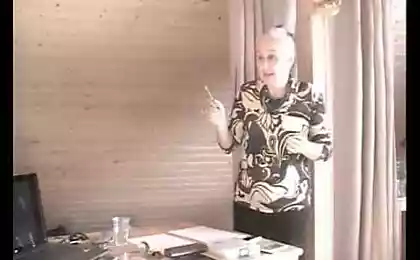496
Nervous tissue: control of all processes in the body
Nervous tissue consists of neurons (nerve cells) and glia (intercellular substance). Nerve cells have a different shape. A nerve cell is provided with tree-like branches, dendrites, transmission of irritation from the receptors to the cell body, and long process — the axon, which ends on the effector cell. Sometimes the axon not covered by myelin sheath.
Nerve cells capable under the influence of irritation coming to a state of excitation, to produce pulses and transmit them. These properties define the specific function of the nervous system. Neuroglia is organically linked with the nerve cells and carries out trophic, secretory, and protective functions as a support.
Nerve cells — neurons, or neurocity represent the process cells. The size of the neuron's body vary considerably (from 3.4 to 130 microns). The form of nerve cells is also very different. The processes of nerve cells conduct nerve impulse from one part of the body to another, the length of the prongs from a few microns up to 1.0-1.5 m.
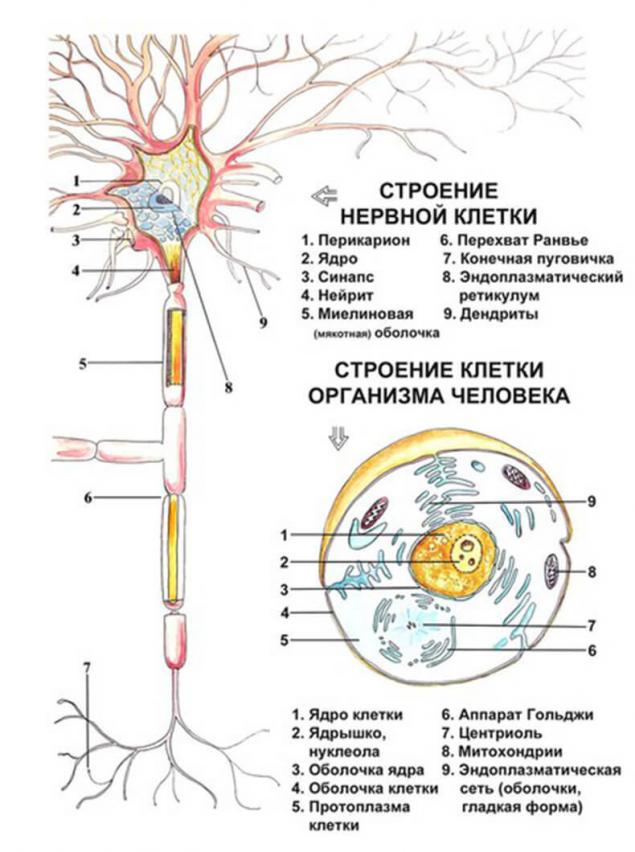
There are two types of processes of nerve cells. The processes of the first type conduct impulses from the body's nerve cells to other cells or tissues of the working bodies, they are called by neurite outgrowth, or nerve. The nerve cell is always only one axon that ends in terminal unit to another neuron or to a muscle gland.
The processes of the second type are called dendrites, they are tree-like branched. Their number of different neurons are different. These processes conduct nerve impulses to the body of the nerve cell. The dendrites of sensitive neurons have peripheral end of the special receptive apparatus — sensitive nerve endings, or receptors.
Classification of neurons by function:
perceiving (sensory, sensory, receptor). Serve for the perception of signals from the external and internal environment and transmit them to CNS;
contact (intermediate, inserted, interneurons). Provide the processing, storage and transmission of information to the motor neurons. Them in the Central nervous system the most;
motor (efferent). Form the control signals, and transmit them to the neurons of the peripheral and Executive bodies.
Types of neurons by number of processes:
unipolar – have a single process;
pseudounipolar of the body moves one arm, which then splits into 2 branches;
bipolar – two process, one dendrite, the other an axon;
multipolar – have one axon and many dendrites.
Axons are covered with a sheath called nerve fibers. Distinguish:
continuous — covered with a continuous shell are part of the autonomic nervous system;
meat — covered complex, discontinuous sheath, the impulses can pass from one fiber to other tissues. This phenomenon is called irradiation.
Sensitive nerve endings (receptors) are formed terminal branches dendrites of sensitive neurons:
exteroretseptora perceive stimuli from the environment;
the interoreceptors perceive irritation from the internal organs;
proprioreceptor perceiving irritation from the inner ear and joint bags.
The biological importance of receptors are divided into: food, sex, defensive.
The nature of the response of the receptors are divided into: motor — located in muscles; secretory — glands; vasomotor in the blood vessels.
Effector — the Executive branch of the nervous processes. Effectors are of two types — motor and secretory.
Motor (motor) nerve endings are terminal branches of the neurites of the motor cells in muscle are called neuromuscular endings.
Secretory glands end in the form of the neuro-glandular end. Named types of nerve endings constitute nervous tissue the synapse.
The sun is one of the most important and affordable medicines
The iceberg of the brain: our subconscious mind is smarter than we thought
Communication between nerve cells is carried out via synapses. They are formed by terminal branches along slender projection of a single cell body, dendrites or axons of other. In the synapse the nerve impulse passes in one direction only (along slender projection on the body or dendrites of another cell). In various parts of the nervous system they are arranged differently.published
P. S. And remember, only by changing their consumption — together we change the world! ©
Source: vk.com/osteopract_ru?w=wall-39969128_3622
Nerve cells capable under the influence of irritation coming to a state of excitation, to produce pulses and transmit them. These properties define the specific function of the nervous system. Neuroglia is organically linked with the nerve cells and carries out trophic, secretory, and protective functions as a support.
Nerve cells — neurons, or neurocity represent the process cells. The size of the neuron's body vary considerably (from 3.4 to 130 microns). The form of nerve cells is also very different. The processes of nerve cells conduct nerve impulse from one part of the body to another, the length of the prongs from a few microns up to 1.0-1.5 m.

There are two types of processes of nerve cells. The processes of the first type conduct impulses from the body's nerve cells to other cells or tissues of the working bodies, they are called by neurite outgrowth, or nerve. The nerve cell is always only one axon that ends in terminal unit to another neuron or to a muscle gland.
The processes of the second type are called dendrites, they are tree-like branched. Their number of different neurons are different. These processes conduct nerve impulses to the body of the nerve cell. The dendrites of sensitive neurons have peripheral end of the special receptive apparatus — sensitive nerve endings, or receptors.
Classification of neurons by function:
perceiving (sensory, sensory, receptor). Serve for the perception of signals from the external and internal environment and transmit them to CNS;
contact (intermediate, inserted, interneurons). Provide the processing, storage and transmission of information to the motor neurons. Them in the Central nervous system the most;
motor (efferent). Form the control signals, and transmit them to the neurons of the peripheral and Executive bodies.
Types of neurons by number of processes:
unipolar – have a single process;
pseudounipolar of the body moves one arm, which then splits into 2 branches;
bipolar – two process, one dendrite, the other an axon;
multipolar – have one axon and many dendrites.
Axons are covered with a sheath called nerve fibers. Distinguish:
continuous — covered with a continuous shell are part of the autonomic nervous system;
meat — covered complex, discontinuous sheath, the impulses can pass from one fiber to other tissues. This phenomenon is called irradiation.
Sensitive nerve endings (receptors) are formed terminal branches dendrites of sensitive neurons:
exteroretseptora perceive stimuli from the environment;
the interoreceptors perceive irritation from the internal organs;
proprioreceptor perceiving irritation from the inner ear and joint bags.
The biological importance of receptors are divided into: food, sex, defensive.
The nature of the response of the receptors are divided into: motor — located in muscles; secretory — glands; vasomotor in the blood vessels.
Effector — the Executive branch of the nervous processes. Effectors are of two types — motor and secretory.
Motor (motor) nerve endings are terminal branches of the neurites of the motor cells in muscle are called neuromuscular endings.
Secretory glands end in the form of the neuro-glandular end. Named types of nerve endings constitute nervous tissue the synapse.
The sun is one of the most important and affordable medicines
The iceberg of the brain: our subconscious mind is smarter than we thought
Communication between nerve cells is carried out via synapses. They are formed by terminal branches along slender projection of a single cell body, dendrites or axons of other. In the synapse the nerve impulse passes in one direction only (along slender projection on the body or dendrites of another cell). In various parts of the nervous system they are arranged differently.published
P. S. And remember, only by changing their consumption — together we change the world! ©
Source: vk.com/osteopract_ru?w=wall-39969128_3622
